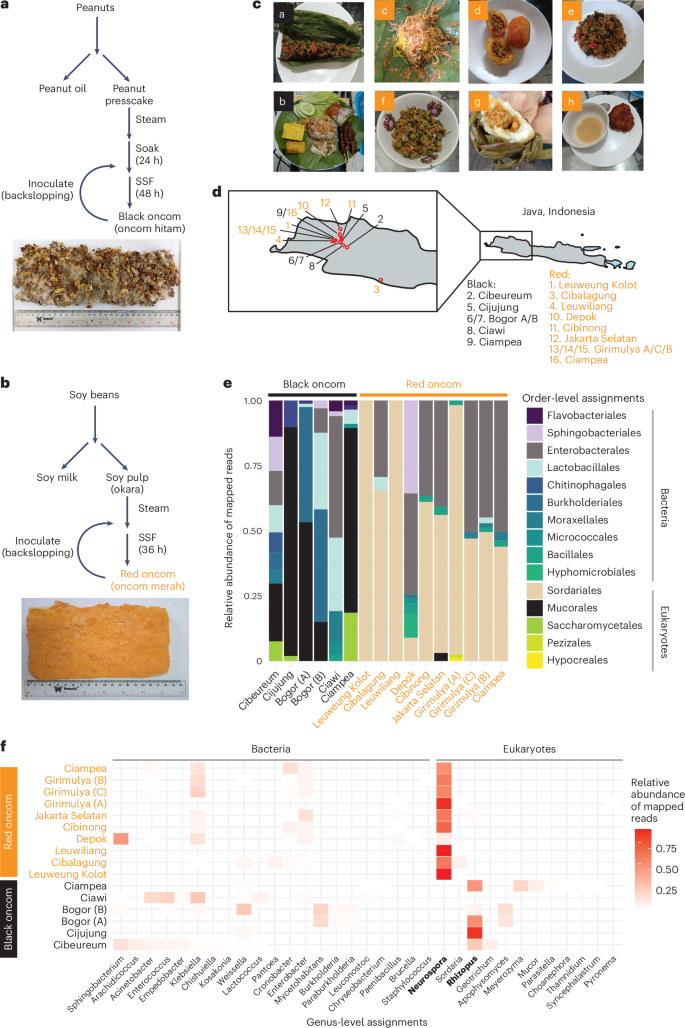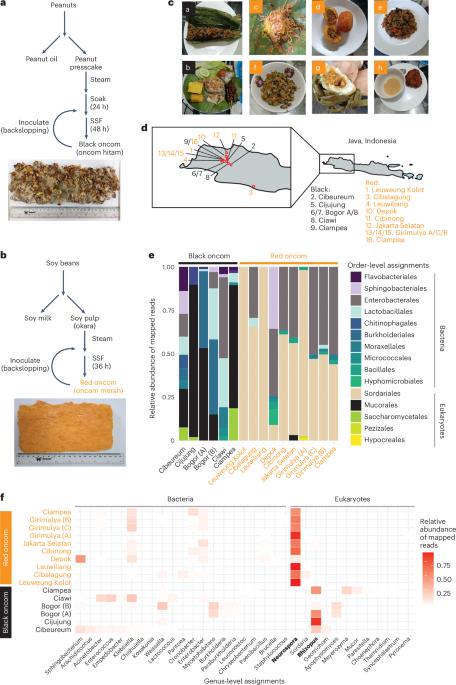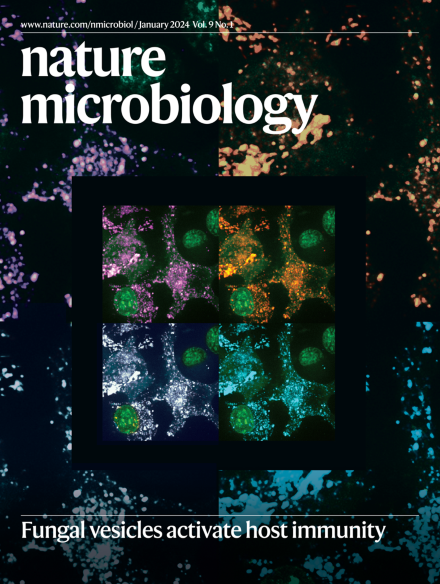从传统发酵食品中提取的中间神经孢子菌实现了变废为宝
IF 20.5
1区 生物学
Q1 MICROBIOLOGY
引用次数: 0
摘要
真菌发酵食品和农副产品有望提高食品的可持续性和安全性。然而,人们对真菌废物转化为食品的分子基础仍然知之甚少。在这里,我们使用多组学方法来描述印尼爪哇传统上用豆浆副产品生产的发酵食品 oncom 的特征。对来自爪哇西部小规模生产者的样本进行的元基因组测序表明,Neurospora intermedia 真菌在 oncom 中占主导地位。进一步的转录组、代谢组和系统发生组分析表明,oncom 衍生的 N. intermedia 在发酵过程中利用果胶和纤维素降解,属于与人类产生的副产品相关的基因独特亚群。最后,我们发现 N. intermedia 可在多种副产品(如果蔬渣和植物性牛奶废料)上生长,不会产生霉菌毒素,并能制作出印尼以外消费者喜爱的食品。这些结果展示了真菌发酵的传统意义和未来潜力,即利用现成的副产品制作美味营养的食品。本文章由计算机程序翻译,如有差异,请以英文原文为准。


Neurospora intermedia from a traditional fermented food enables waste-to-food conversion
Fungal fermentation of food and agricultural by-products holds promise for improving food sustainability and security. However, the molecular basis of fungal waste-to-food upcycling remains poorly understood. Here we use a multi-omics approach to characterize oncom, a fermented food traditionally produced from soymilk by-products in Java, Indonesia. Metagenomic sequencing of samples from small-scale producers in Western Java indicated that the fungus Neurospora intermedia dominates oncom. Further transcriptomic, metabolomic and phylogenomic analysis revealed that oncom-derived N. intermedia utilizes pectin and cellulose degradation during fermentation and belongs to a genetically distinct subpopulation associated with human-generated by-products. Finally, we found that N. intermedia grew on diverse by-products such as fruit and vegetable pomace and plant-based milk waste, did not encode mycotoxins, and could create foods that were positively perceived by consumers outside Indonesia. These results showcase the traditional significance and future potential of fungal fermentation for creating delicious and nutritious foods from readily available by-products. A multi-omics analysis of oncom, an Indonesian fermented food made from soymilk waste, shows how associated fungi break down food waste to yield nutritious and positively received foods.
求助全文
通过发布文献求助,成功后即可免费获取论文全文。
去求助
来源期刊

Nature Microbiology
Immunology and Microbiology-Microbiology
CiteScore
44.40
自引率
1.10%
发文量
226
期刊介绍:
Nature Microbiology aims to cover a comprehensive range of topics related to microorganisms. This includes:
Evolution: The journal is interested in exploring the evolutionary aspects of microorganisms. This may include research on their genetic diversity, adaptation, and speciation over time.
Physiology and cell biology: Nature Microbiology seeks to understand the functions and characteristics of microorganisms at the cellular and physiological levels. This may involve studying their metabolism, growth patterns, and cellular processes.
Interactions: The journal focuses on the interactions microorganisms have with each other, as well as their interactions with hosts or the environment. This encompasses investigations into microbial communities, symbiotic relationships, and microbial responses to different environments.
Societal significance: Nature Microbiology recognizes the societal impact of microorganisms and welcomes studies that explore their practical applications. This may include research on microbial diseases, biotechnology, or environmental remediation.
In summary, Nature Microbiology is interested in research related to the evolution, physiology and cell biology of microorganisms, their interactions, and their societal relevance.
 求助内容:
求助内容: 应助结果提醒方式:
应助结果提醒方式:


